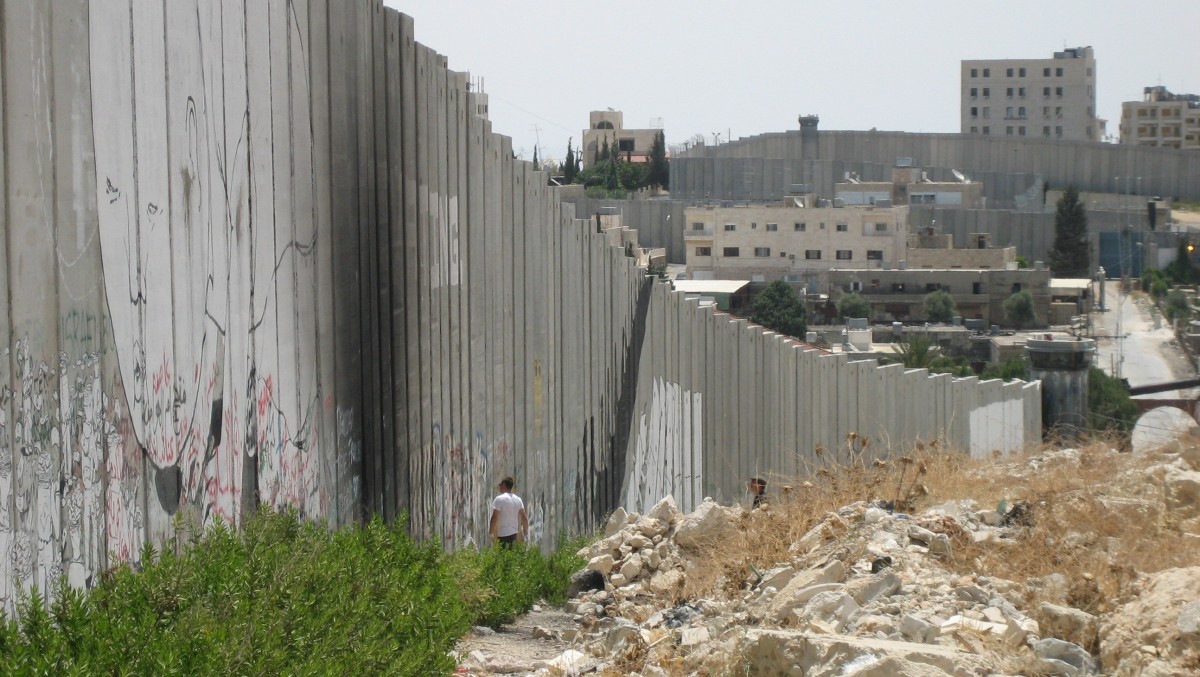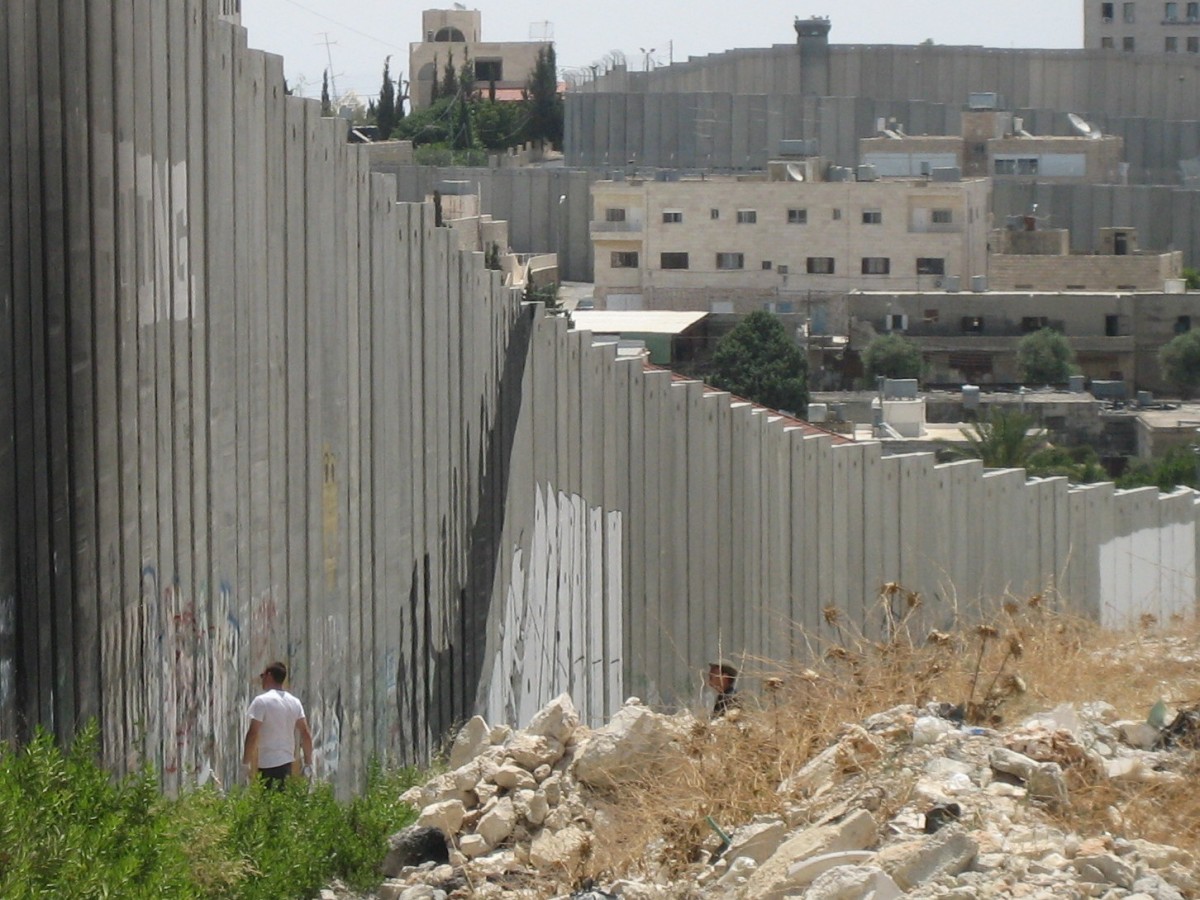
“The very word ‘peace’ has become negatively charged for many people,” observed Rabbi Amy Eilberg at a recent public lecture at Hamline University that brought together a rabbi and a qadi — an Islamic judge — from Israel to highlight peacemaking efforts on the part of religious leaders in Israel.
I brought a group of students in one of my world religions courses with me to hear the speakers at the event last week. They were eager, as was I, to hear from individuals who are working for peace from across religious and cultural divides. We were not disappointed by what we heard.
The “other” peace
The talk, entitled “The Other Peace Process: Interreligious Dialogue in the Service of Peace” featured Rabbi Ron Kronish and Qadi Iyad Zahalka, two Jerusalem-based holy leaders currently engaged in projects to help build peace in Israel.
The “other peace process” being discussed at the event is one that brings together people from different religions and nationalities, namely Jewish Israelis and Muslim Palestinians, to encounter each other substantively and sensitively in order to find ways to live in peaceful coexistence together.
“It is different from the political peace process, which has been stalled for many years,” an article the men co-created details. “It is different from peacemaking, which one of our friends calls assembling ‘pieces of paper,’ referring to the creation of peace treaties, usually by lawyers and diplomats, who then argue for the next several years (or decades) that the other side didn’t live up to their end of the agreement. In our interreligious work in Israel, we have been connecting people through dialogue and educational programmes for many years. We bring together religious leaders, educators, women, youth and young adults for long-term (at least 10 months and sometimes for up to 4 years) substantive and sensitive encounters with each other.”
Both speakers maintained that while only political leaders can create peace treaties, religious leaders can help people in conflict learn to live together.
“Our knowledge of conflict is shaped by the news media, whose work hungers for conflict,” Eilberg told me, noting that while she had reached out to many American media entities for coverage of the event, none came to report on it.
Eilberg introduced the Israeli duo noting that they were engaged in the “other” peace process, meaning that they are not politicians or lawmakers of any sort, but “see inter-religious dialogue as a key to peace — before, during and after the signing of any peace agreements. They dialogue and educate to change hearts and minds in the service of peace.”
Challenges to legal peace in Israel
Mint Press News recently reported that illegal Jewish settlements and outposts throughout the West Bank have caused unrest in the ongoing Israeli-Palestinian conflict.
Violence is on the rise, exacerbating the effects of the Israeli military occupation that has resulted in the destruction of 28,000 Palestinian homes, businesses and livestock facilities since 1967, according to figures published by the Israeli Committee Against Home Demolition.
Similar to the plight of Native Americans in the U.S., Palestinians claim to be the original owners of land taken by European Jewish settlers. There are some 500,000 illegal Jewish settlers scattered throughout the 125 settlements and 100 outposts in the Palestinian territories of the West Bank and East Jerusalem today.
And moreover, as the West Bank and East Jerusalem comprise the heart of the proposed Palestinian state, hopes for peace remain a complicated matter from a legal standpoint.
“Settlement construction remains the biggest single threat to the two-state solution. It is systematic, deliberate and provocative,” states a report from European Union officials, issued earlier this year.
Muslims, Jews reaching out in Israel
As one recent article detailing an atypical friendship between a Jewish Israeli and a Muslim Palestinian puts it, “The Israeli occupation creates a wall of separation, with checkpoints and soldiers who humiliate Palestinians trying to get to work by forcing them to wait in line for hours, even if that means they must get up at 3 a.m. to get to work on time.”
Shaul David Judelman is a rabbi in Bat Ayin, a religious settlement in the occupied West Bank. He befriended Palestinian Ziad Abed Sabateen; together they plan to open an organic farm that will sell vegetables and support families in need. Jedulman told the Christian Science Monitor: “I am torn. It is very important that Jews and Palestinians engage each other, and they are not doing enough. I accept the Palestinians’ desire for self-determination and the right to achieve a national state. But I don’t know if that’s a road to peace or to war.”
However, as the talk with Kronish and Zahalka proved, there are many Israelis and Palestinians who are forming bonds in an effort to transcend the violence and strife the media is so focused on.
Kronish, who organizes inter-religious dialogue opportunities, says he follows a four-step process. The first step is to bring people — namely Israelis and Palestinians — together, in order to learn about each other. He says that when people meet face-to-face, it personalizes participants in the conflict and helps to break down stereotypes. Secondly, inter-religious learning takes place. This occurs when Jews and Muslims learn about each other’s faith traditions. Rabbis and imams both respectively lead this portion of the process. Kronish says that there is much misinformation out there on religions, and adds that people can’t rely on the news or the Internet for information on religions, as they may distort the information. The goal is to break down ignorance that gives rise to stereotypes.
Thirdly, people are taught to listen and discuss painful issues that hurt each side in the conflict. There is also a discussion of the conflict. And finally a call to action is issued. This means that participants are asked after leaving the dialogues to take some sort of action toward the effort of peace in their communities. This may be teaching a course on what they learned at their mosque or synagogue.
Peace is possible
“We have to do something to improve the situation,” Kronigh said.
Zahalka echoes this point. “Allah created people from different languages, tribes and religions to meet each other,” he says.
He also agrees that there are many stereotypes that persist on either side. “Inter-religious dialogue is something God wants us to do. There are fundamentalists in each religion, and they are the minority. The majority want to live in peace with everyone.”
Inter-religious dialogue, as pointed out by the panelists, is a long-term process. Their work on the ground in Israel-Palestine is commendable.
The joint speaking tour throughout the United States they have embarked upon is also impressive — it’s all in an effort to get the message across that peace is possible.
They recently also gave a talk at a congregation of 1,000 Muslim worshippers in the Adams Mosque in Northern Virginia – one of the largest mosques in the United States — on a Friday morning, before the noon prayer. “After our talk many people came up to us and told us how much they appreciated our message of peace and cooperation,” Kronish and Zahalka say.
“Our message is one that is not usually heard outside of Israel. It emphasises that peaceful living is possible and that reaching a peace agreement between Israel and Palestine is not impossible.”
I’m grateful to have heard this message, and to be able to now share it with my readers.


